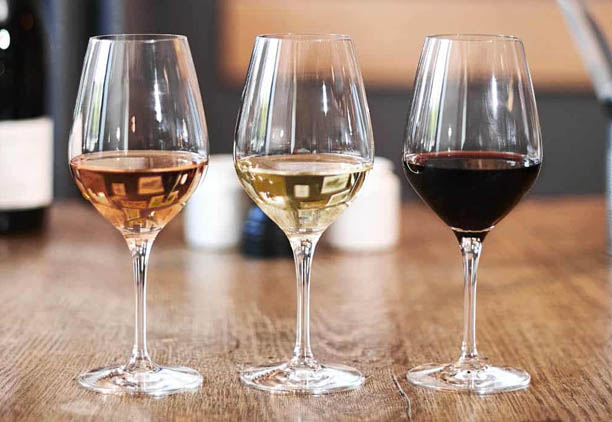AMATEUR LEVEL – DISCOVERING THE SUBTLETIES OF WINE
By Mathilde Escande
To get to grips with the world of wine, it’s important to familiarise yourself with the basics, test and discover new wineermet d’élargir ses connaissances et de développer son propre palais pour cet art millénaire.
🍷 WINE CHOICE :
- Typology
As a wine-lover, you can turn to PGI (Protected Geographical Indication) or PDO (Protected Designation of Origin) wines to discover the diversity of French wines. This means you can find wines to suit your tastes and budget.
- The basics of food and wine pairing
Matching food and wine is not always easy. Here are the main principles:
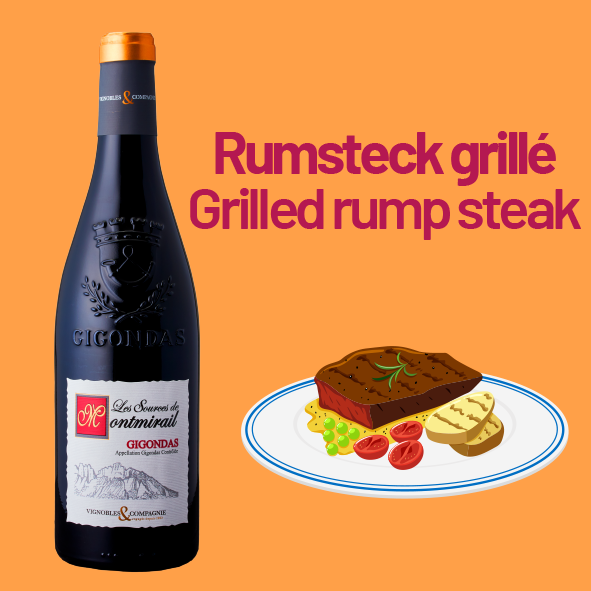
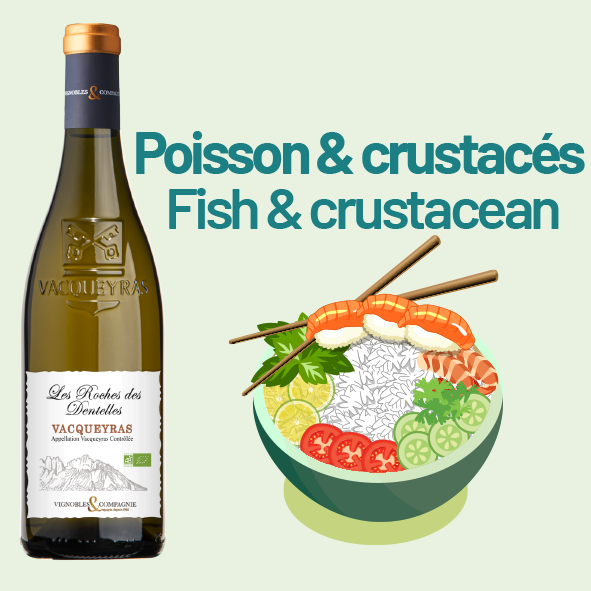
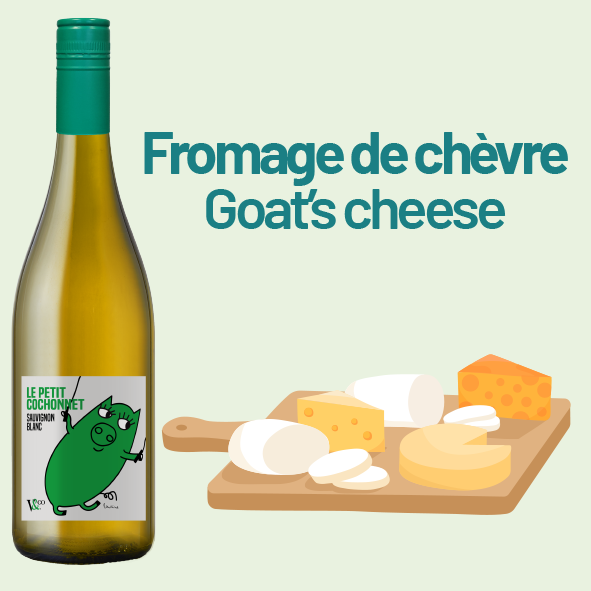

- Where to buy
This type of wine can be found in supermarkets. You can find good-value bottles at wine fairs. Wine merchants will also be able to offer you wines to suit your requirements.
You can find what you’re looking for on our website, where we offer a wide range of AOP (AOP range) and Vin de France (Vin de France range) wines.
These wines will cost you between €10 and €30, so you can expand your knowledge without breaking the bank.
🍷 TASTER’S TOOLBOX
- Why aerate a wine?
Oxygen is essential to wine, but it can also have a harmful effect.
When a wine is exposed to oxygen, the oxidation process is triggered. This phenomenon has an impact on the flavour, aroma and structure of the wine and allows it to develop.
- To Carafe or to Decant?
Carafing and decanting are two complementary techniques used to enhance the wine-tasting experience. Young wines are carafed, while old wines are decanted.
Carafing :
This technique helps awaken the aromas and eliminate any off odors. A wine is carafed one to three hours before the meal. The wine is poured vigorously into the carafe, then swirled so it can “stretch its legs.”
Decanting :
With age, tannins and color pigments form sediment. Decanting allows the wine to be separated from the sediment that has accumulated.
The bottle should be placed upright for 12 to 24 hours so the sediment settles at the bottom. Then, gently pour the wine into a carafe using good lighting.
Decanting should be done just a few minutes before serving to prevent oxygen from spoiling the wine.
- Tasting order
The order in which the wines are tasted has an impact on how they are perceived and appreciated. In general, the order goes from the liveliest and lightest to the most robust and powerful.
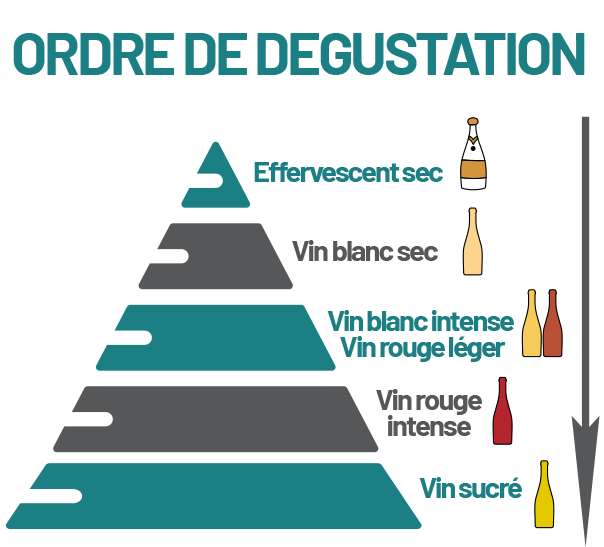
- Preserving wine
Wines can be kept for a few days, depending on the amount of wine remaining and the amount of air in the bottle. The fuller the bottle, the better it will keep. Otherwise, the air will attack the wine and kill it.
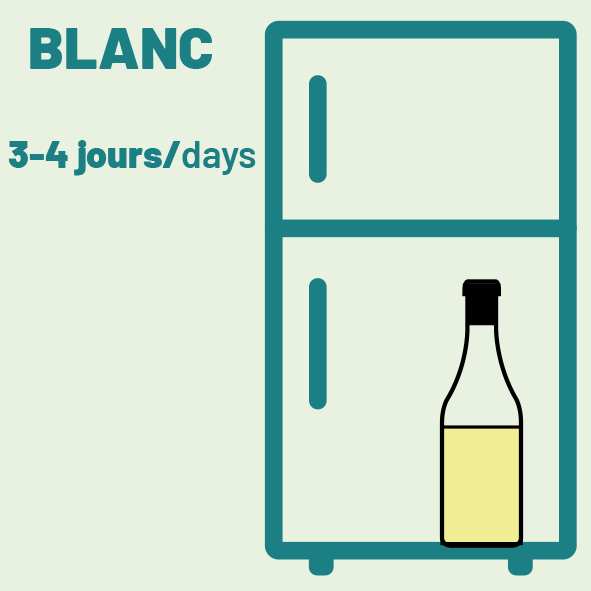
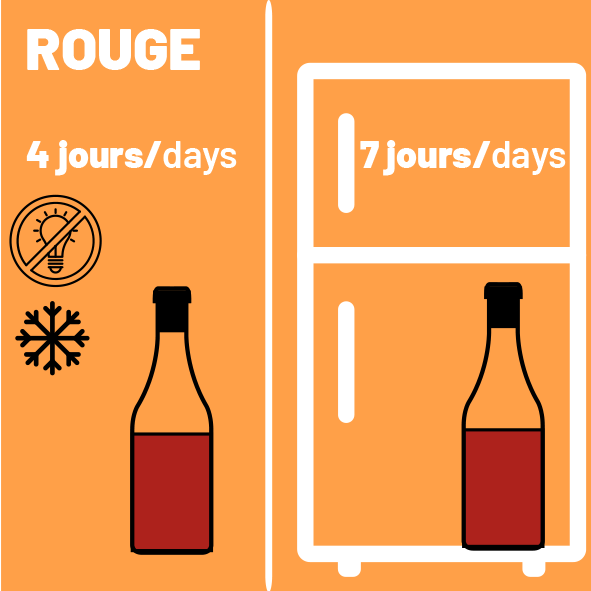
🍷 THE STAGES OF TASTING :
- VISUAL ANALYSIS
On examine la couleur selon plusieurs critères :
Shade: refers to its colour and the visual variations observed in light.
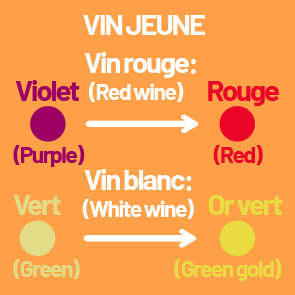
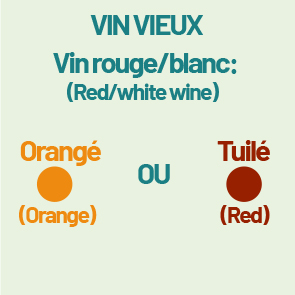
Intensity: refers to the density of its colour. It provides information on several
concepts.
Aged :
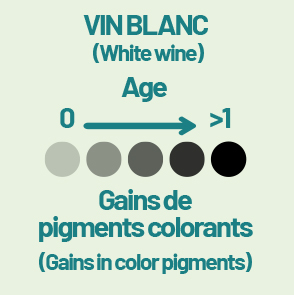
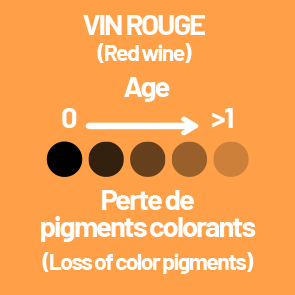
Origin: Grapes that can withstand the heat have thicker skins, which contain more colour pig
Clarity: refers to its transparency and absence of suspended particles. It is the visual clarity of the wine.
Brilliance: refers to its visual brilliance, reflecting the quality of its clarification and the purity of its colour.
- OLFACTORY ANALYSIS
Aromas emerge during the wine-making process. Each type of grape has its own aromatic potential, which is expressed during fermentation. Others appear during vinification and ageing.
Primary aroma: These are the aromas contained in the grapes, released during alcoholic fermentation (mineral, spicy, vegetal, etc.).
Secondary aromas: These are created by the yeasts during fermentation. (fruity, floral, empyreumatic)
Tertiary aromas: These are created when the wine is matured in the barrel. The aromas will differ according to the amount of oxygen absorbed by the barrel (woody, toasty, toasted).
(If you want to know more about the aromatic families, you can read our article again)
First nose :
At this stage, you need to ‘smell’ the wine. This allows you to discover the first aromas that emerge when the wine is at rest.
Second nose :
The second nose is observed by releasing the aromas by aerating the wine. Gently turn the wine in the glass to bring it into contact with the oxygen and smell it again. The wine opens up and the aromas are more perceptible and intense.
- TASTE ANALYSIS :
Cette analyse consiste à évaluer les saveurs et les sensations du vin en bouche.
The different flavours of wine :
Bitterness: when it is fine, it is a sign of elegance. If it is too strong, it becomes unpleasant. It is often noticeable at the end of the palate.
Saltiness: notable in certain lively white wines and certain red wines. It is the sign of an elegant wine and a great terroir.
Sweetness: the perception of sugar is immediate. The more sugar we consume, the less sensitive we are to it.
Acidic: it makes you salivate and whets your appetite. But a wine that is too acidic is unpleasant on the palate.
Umami: described as a savoury or ‘deliciously pleasant’ flavour. Umami is associated with the presence of glutamate, a natural amino acid.
The different sensations :
Four sensations are observed during the taste test:
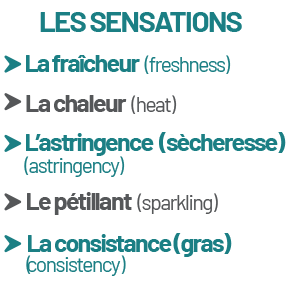
Stages of taste analysis :
The attack: This stage corresponds to the first sip of wine. It consists of chewing the wine for 3-4 seconds to form an initial opinion.
Middle: During this phase, keep the wine in the mouth (10 seconds) to analyse the tannins.
Finish: Analyse the aromas that remain in the mouth and determine the aromatic persistence. This length in the mouth is called a caudalie: 1 second = 1 caudalie.
Here are a few examples from the Vignobles & Compagnie vintages below:
🍷 Château des Sources Cuvée S – Blanc (Costières de Nîmes)
Visual analysis :
- Shade: golden yellow
- Intensity: clear
- Clarity: crystalline
- Brilliance: sparkling
Olfactory analysis :
- First Nose: fruity
- Second nose: powerful white flowers, exotic fruit, vanilla (tertiary aroma)
- Olfactory descriptors: fine and nuanced
Taste analysis :
- Attack: fresh (acidity) and frank
- Mid-palate: full-bodied
- Finish: presence of fresh fruit and salinity on the finish
🍷 Voiturette – Cabernet Sauvignon (Vin de France)
Visual analysis :
- Shade: purplish
- Intensity: high
- Clarity: opalescent
- Brightness: luminous
Olfactory analysis :
- First Nose: vegetal, fruity
- Second nose: blackcurrant, blackberry, laurel
- Olfactory descriptors: frank and varied
Taste analysis :
- Attack : round
- Mid-palate: soft, silky tannins
- Finish: smooth and full
Don’t hesitate to play the tasting game with our wines with varied profiles.
Enjoy your tasting!
See you soon
